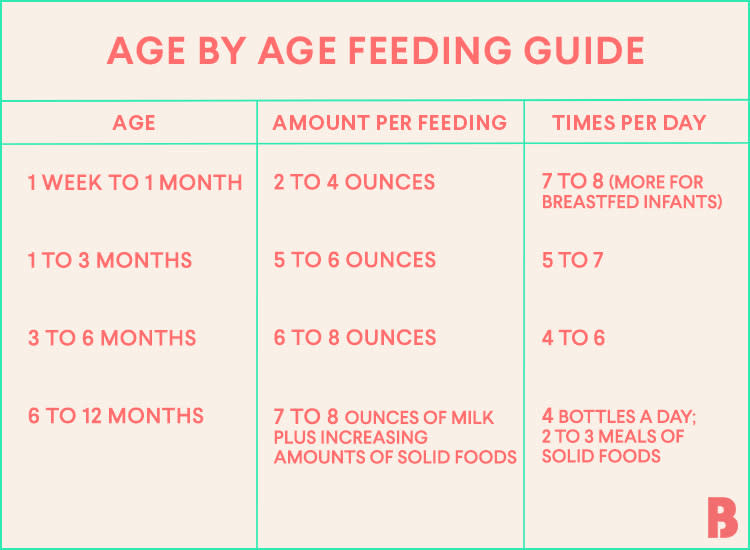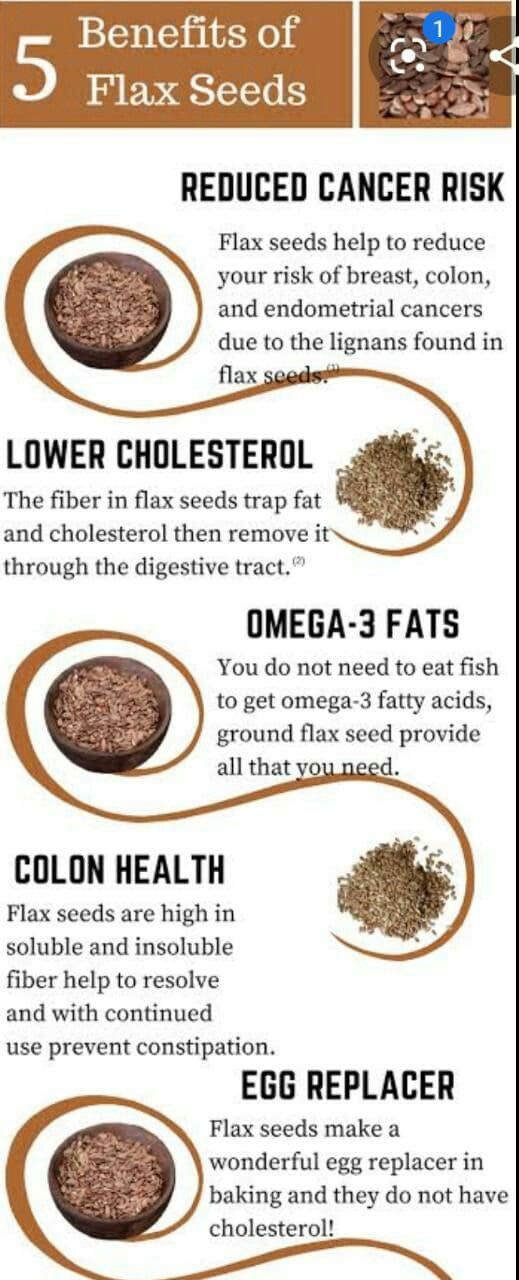How often should i feed my 6 month baby
Feeding your baby: 6–12 months
At 6 months of age, breastmilk continues to be a vital source of nutrition; but it’s not enough by itself. You need to now introduce your baby to solid food, in addition to breastmilk, to keep up with her growing needs.
Be sure you give your baby her first foods after she has breastfed, or between nursing sessions, so that your baby continues to breastfeed as much as possible.
When you start to feed your baby solid food, take extra care that she doesn’t become sick. As she crawls about and explores, germs can spread from her hands to her mouth. Protect your baby from getting sick by washing your and her hands with soap before preparing food and before every feeding.
Your baby's first foods
When your baby is 6 months old, she is just learning to chew. Her first foods need to be soft so they’re very easy to swallow, such as porridge or well mashed fruits and vegetables. Did you know that when porridge is too watery, it doesn't have as many nutrients? To make it more nutritious, cook it until it’s thick enough not to run off the spoon.
Feed your baby when you see her give signs that she's hungry – such as putting her hands to her mouth. After washing hands, start by giving your baby just two to three spoonfuls of soft food, twice a day. At this age, her stomach is small so she can only eat small amounts at each meal.
The taste of a new food may surprise your baby. Give her time to get used to these new foods and flavours. Be patient and don’t force your baby to eat. Watch for signs that she is full and stop feeding her then.
As your baby grows, her stomach also grows and she can eat more food with each meal.
Feeding your baby: 6–8 months old
From 6–8 months old, feed your baby half a cup of soft food two to three times a day. Your baby can eat anything except honey, which she shouldn't eat until she is a year old. You can start to add a healthy snack, like mashed fruit, between meals. As your baby gets increasing amounts of solid foods, she should continue to get the same amount of breastmilk.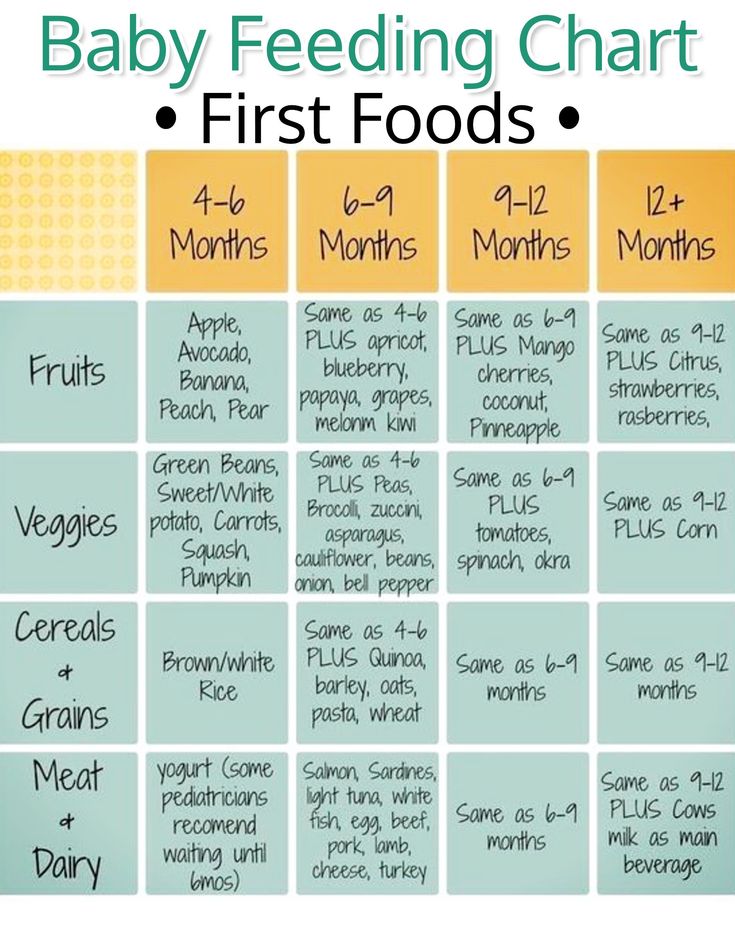
Feeding your baby: 9–11 months old
From 9–11 months old, your baby can take half a cup of food three to four times a day, plus a healthy snack. Now you can start to chop up soft food into small pieces instead of mashing it. Your baby may even start to eat food herself with her fingers. Continue to breastfeed whenever your baby is hungry.
Each meal needs to be both easy for your baby to eat and packed with nutrition. Make every bite count.
Foods need to be rich in energy and nutrients. In addition to grains and potatoes, be sure your baby has vegetables and fruits, legumes and seeds, a little energy-rich oil or fat, and – especially – animal foods (dairy, eggs, meat, fish and poultry) every day. Eating a variety of foods every day gives your baby the best chance of getting all the nutrients he needs.
If your baby refuses a new food or spits it out, don’t force it. Try again a few days later. You can also try mixing it with another food that your baby likes or squeezing a little breastmilk on top.
Feeding non-breastfed babies
If you're not breastfeeding your baby, she’ll need to eat more often. She'll also need to rely on other foods, including milk products, to get all the nutrition her body needs.
- Start to give your baby solid foods at 6 months of age, just as a breastfed baby would need. Begin with two to three spoonfuls of soft and mashed food four times a day, which will give her the nutrients she needs without breastmilk.
- From 6–8 months old, she’ll need half a cup of soft food four times a day, plus a healthy snack.
- From 9–11 months old, she’ll need half a cup of food four to five times a day, plus two healthy snacks.
6-month-old feeding schedule: Timetable
A baby’s 6-month birthday marks an important transition as many infants are ready to start trying solids at this point.
While breast milk or formula should still form the core of a 6-month-old’s diet, some caregivers find that a child’s feeding schedule shifts as they begin eating purees and other solids.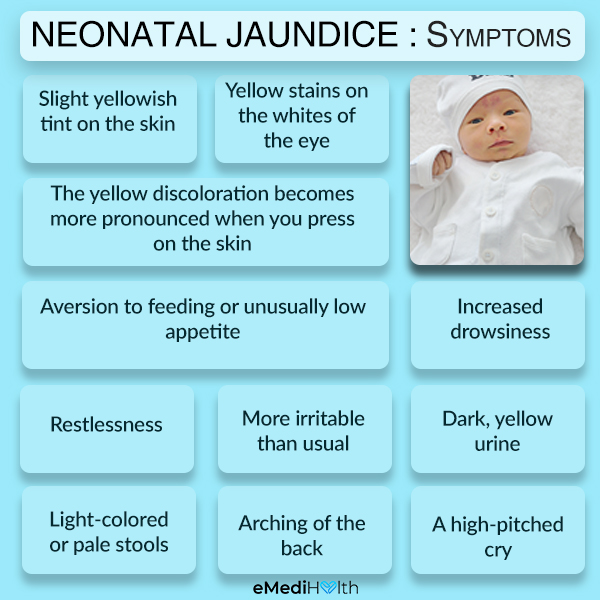
Babies typically need to eat every 2–3 hours, five to six times during the day.
It is normal for a baby’s schedule to change from day to day, or for babies to eat different amounts of food each day.
Caregivers can follow a baby’s cues, even if they have established a schedule already. A parent or caregiver does not need to deny food to a baby just because it has already eaten.
Introducing solids
The American Academy of Pediatrics (AAP) advise that parents exclusively breastfeed infants for about 6 months if possible. By the time a baby hits their half birthday, they may be ready to try solids.
A baby may be ready for solids at 6 months if:
- they have good head control
- they can hold their head up for extended periods
- they can sit up with no or very little assistance
- they no longer have the tongue thrust reflect to push food out of the mouth with the tongue
- they show interest at mealtime and lean toward food if a caregiver offers it
At this age, breast milk or formula is still a baby’s most important form of nutrition and solids are an addition.
Not all 6-month-olds are ready for solids. If a baby shows no interest, a caregiver can wait a few weeks and try again.
Giving a baby 1–2 tablespoons of iron fortified cereal or fruit or vegetable purees per feeding can be a good place to start.
Gradually increasing this as the baby’s interest and appetite increase can follow.
To ensure a baby eats sufficient food, the adult can breastfeed or give a bottle before offering solids.
Caregivers can give solid food as a supplement each time they nurse the baby or give a bottle. Or, they can include the baby in family meals by giving solids at mealtime.
At 6 months of age, when an infant may begin to want solids, a caregiver can offer these just once per day.
Choosing a time of day when the caregiver is relaxed and not pressed for time, and the baby is not overly hungry, fussy, or tired often works best.
Once a baby is enjoying their once-a-day solids, the frequency can increase to two and then three times a day.
There is no “right” schedule, but caregivers should plan to increase the number of solids babies get gradually.
At 6 months, the goal is not to introduce new foods and eating habits. Similarly, there is no need to force a baby to eat solids or restrict new food if a baby indicates they want more.
Regardless of their size and eating habits, babies need access to an expanding variety of solid foods.
Most babies will need to try new foods several times before they feel comfortable eating them. It is fine to let a child eat at their own pace, in the way that feels right to them.
It is acceptable at this age for a baby to play with their food since this is a way of exploring new things.
Breast milk and formula
Breast milk or formula remains the most important food at 6 months of age. The easiest way to ensure a baby eats enough is to nurse or formula feed them on demand when they show signs of hunger.
Research supports the value of feeding on demand.
A longitudinal study of 10,419 children found better academic achievement and a four-point Intelligent Quotient (IQ) advantage at 8 years old among children whose caregivers fed them on demand.
However, the caregivers of these children got less sleep and had lower overall well-being.
These results may point to adults finding a happy medium, such as steadily shaping the baby’s preferred schedule into one that works for them.
In general, caregivers should plan to breastfeed babies 3 to 5 times per day, and sometimes more. However, babies vary greatly and every 3–4 hours is common, which can amount to up to eight times in 24 hours.
Some babies prefer cluster feedings, during which they nurse several times in a short period. Growing or sick babies may also nurse more frequently.
If a baby has formula, giving 24–32 ounces of iron fortified formula spread over five or six feeds per day is typical. While some babies sleep through the night at 6 months, others will still wake or want to feed.
A nighttime “dream feed” around the time caregivers retire for the evening may help babies sleep longer.
Other liquids
Babies do not need juice at 6 months. The extra calories can decrease a baby’s appetite, and the sugar may damage a child’s developing teeth. Soda and other drinks are not healthful for babies.
Babies can have water beginning at 6 months, or when caregivers introduce solids, whichever is later. Introducing a cup of water along with solid meals may be helpful.
Around 6 months old, some babies begin transitioning from three or four daily naps to two. The baby might take a midmorning nap and a midafternoon nap. At this age, most babies need 12–15 hours of sleep per day, and naps usually last 1–3 hours.
Caregivers are best finding a schedule that works for them and the child. Some children are used to falling asleep by nursing or with a bottle. Others happily doze off on their own.
A caregiver can follow the baby’s cues and work to adapt their needs to the family’s schedule slowly.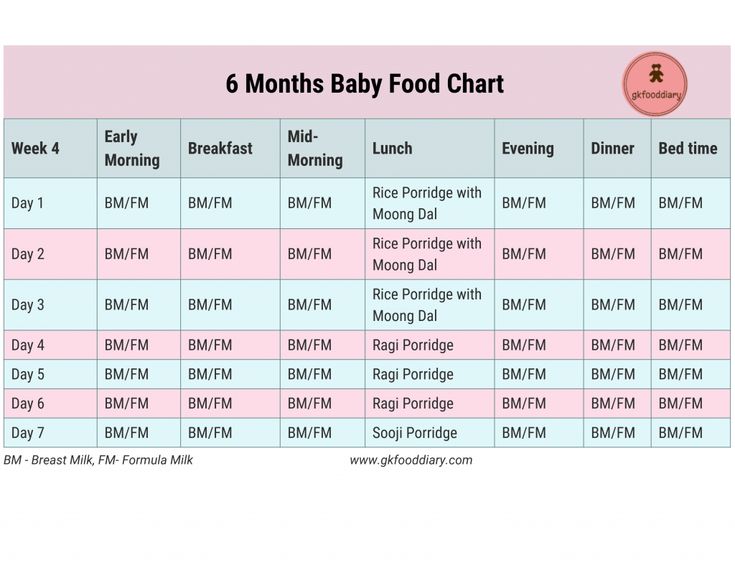
These feeding tips may help:
- Babies may be hungrier after waking from a long nap. This can be a good time to try solids after offering formula or breast milk to ease their initial hunger.
- There is no evidence that adding cereal to a bottle helps babies sleep longer. Doing so can increase their risk of choking.
- Babies must never have food without close supervision. nor have solids, even very thin purees, in bed.
Deciding what, when, and how to feed a baby can be challenging, especially during the transition to solids. As long as babies get regular breast milk or formula, caregivers do not need to rush the transition to solids or worry that babies are not eating enough.
Some babies take longer than others to embrace solids, while some will eagerly eat anything. The right schedule is one that works for the baby and family. This schedule may change over time which is also fine.
Breastfeeding on demand
You can often hear from a nursing mother: "I feed on demand, my baby requires a breast every 3.
5 hours." Or: “I have always fed on demand. In a year, we already had 1 feeding in the evening, and my child calmly refused to breastfeed. Before talking about the demand of the child, it is necessary to find out what modern women mean when they say - "I breastfeed."
Modern mothers consider breastfeeding necessary for feeding their baby. Just for feeding. Breast milk is food, the mother supplies the baby with the nutrients necessary for growth and development. When a baby suckles at the breast, he eats. Breastfeeding makes sense only as a process of supplying proteins, fats, carbohydrates, vitamins and microelements. nine0004
During suckling, the baby receives the nutrients it needs with mother's milk. This is the absolute truth. There is another unconditional truth, which is not given any importance in modern society, it is not taken into account and is not considered. Breastfeeding for a child is communication with the mother. We need to figure out how the child understands feeding on demand? Can he understand anything at all? Is there any difference for him how he is fed, for 15-20 minutes after 3. 5 hours or in some other way? nine0004
5 hours or in some other way? nine0004
What is on-demand feeding
On-demand feeding of a newborn baby means putting it to the breast for every squeak or search. Squeak and search movements in newborns, even as early as the second or third day of life, begin to appear much more often than after 3.5 or 2.5 hours. The need for attachments increases rapidly, and by the 10-12th day of life, the need to attach to a child may occur 15-16 or more times a day. Applications vary in duration. The baby can fall asleep and sleep while sucking for, for example, 1.5-2 hours. Can release the breast after 1-2 minutes. And then ask her again. Why does a child need such frequent contact with his mother's breast? nine0004
That's why. Being in the mother's belly, in a calm, familiar environment, listening to the noises of the mother's body, being in a warm, cramped, confined space, the baby sucked his fist, fingers, loops of the umbilical cord, swallowed amniotic fluid. Learned to suck and swallow. After birth, experiencing discomfort for any, the most insignificant reason, the baby tries to get rid of it. You can get rid of discomfort by getting into the usual conditions of a comfortable stay. The only place where the baby after birth can feel the sensations familiar to him is in the arms of the mother. The only familiar action is sucking. The only familiar taste and smell is the taste and smell of milk and lube in the areola. Milk and lubricant have an odor and taste similar to the taste and smell of amniotic fluid. Therefore, experiencing discomfort, the baby squeaks, or begins to look for an object to suck with his mouth. Ideally, it is immediately applied to the chest. The baby becomes warm, cramped, he hears the beating of his mother's heart, breathing, grumbling in the intestines, he sucks and feels the familiar taste and smell. If such an action happens constantly, the baby gains confidence, no matter what happens, he will solve all his problems with his mother. The place of comfort is now under the breast, and you can suck on the breast.
After birth, experiencing discomfort for any, the most insignificant reason, the baby tries to get rid of it. You can get rid of discomfort by getting into the usual conditions of a comfortable stay. The only place where the baby after birth can feel the sensations familiar to him is in the arms of the mother. The only familiar action is sucking. The only familiar taste and smell is the taste and smell of milk and lube in the areola. Milk and lubricant have an odor and taste similar to the taste and smell of amniotic fluid. Therefore, experiencing discomfort, the baby squeaks, or begins to look for an object to suck with his mouth. Ideally, it is immediately applied to the chest. The baby becomes warm, cramped, he hears the beating of his mother's heart, breathing, grumbling in the intestines, he sucks and feels the familiar taste and smell. If such an action happens constantly, the baby gains confidence, no matter what happens, he will solve all his problems with his mother. The place of comfort is now under the breast, and you can suck on the breast. nine0004
nine0004
This whole process is biologically justified. A newborn child does not feel the feeling of hunger, this feeling is not formed in him. It will begin to form at about two months of age. How to feed a creature that does not experience hunger ?! How to encourage him to take some action to get food? This can be done only at the expense of some other incentives. This stimulus for the newborn is constant bodily discomfort, thanks to which he wants to suckle all the time! The most intense, frequent and prolonged sucking in infants is observed in the first two or three months of life. It is in these first months that the main weight gain of the baby occurs. nine0004
Feeding in the first month
Baby falls asleep with breast in mouth, sleeps sucking for a while. Falling asleep deeply, lets go of the chest. After sleeping for a while, he wakes up, and is applied on waking. After sleep, he can stay awake for some time, for example, an hour and a half. During wakefulness, he may feel discomfort 2-3 times, for example, from a completely natural desire to pee, and having called his mother for help, having kissed for a couple of minutes, he will do his deeds.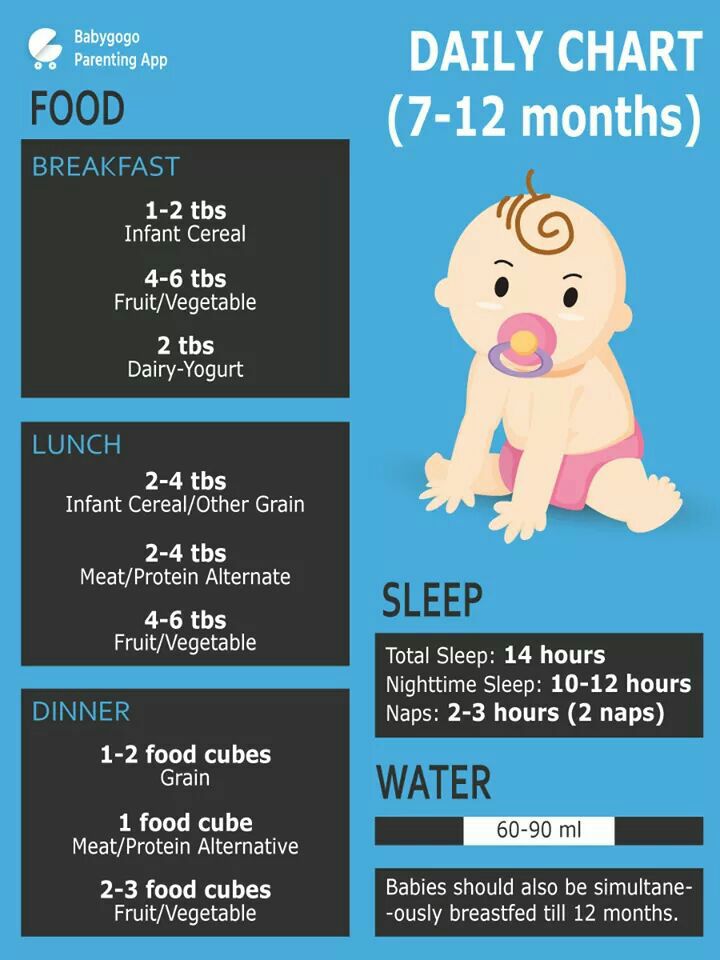 Then he will want to sleep, feel discomfort and, kissing his chest, will again fall asleep sucking. After some time, he will wake up and attach again. Then again a little "walk". And after some time, he will fall asleep at the chest again. nine0004
Then he will want to sleep, feel discomfort and, kissing his chest, will again fall asleep sucking. After some time, he will wake up and attach again. Then again a little "walk". And after some time, he will fall asleep at the chest again. nine0004
The daytime naps of a one-month-old infant feeding on demand vary in duration and number. There can be 4-6 dreams during the day, and they can last from 5-15 minutes to 2-2.5 sometimes 3 hours. "Around" each dream, the baby is applied to the chest, and applied between dreams several times. At night, the child falls asleep at the breast. Usually in the early morning hours, he begins to fuss and apply. In the morning, he almost never fully wakes up. The baby sleeps, from time to time, sucking on his mother's breast. Waking up in the morning, the baby is again applied to the chest. If you count all the attachments that have happened in a baby of one month of age, then approximately 16-20 attachments are obtained. This is how a newborn human cub behaves if it is given the opportunity to behave in accordance with physiological and psychological needs, which, by the way, are genetically determined. The child of the first months of life does not separate his personality from the personality of the mother and from her breast. Mom and her breasts, and everything connected with them, are the universe of the baby and himself. nine0004
The child of the first months of life does not separate his personality from the personality of the mother and from her breast. Mom and her breasts, and everything connected with them, are the universe of the baby and himself. nine0004
In most cases, a modern woman, being afraid to “accustom a child to hands”, strives to limit his requests for sucking. A pacifier and a bottle of tea or water come to her aid in this matter. They, too, can be sucked ... The need for sucking seems to be satisfied. But only the need for communication with the mother during suckling is not satisfied, the peculiar chain of mutual assistance and cooperation between mother and baby is destroyed, the formation of maternal affection and concentration is disrupted. Is the difference in the two actions noticeable to the reader: the baby cried, the mother took him, put him to her chest and started rocking him, or gave him a pacifier and started rocking the stroller, even with the words “Why are you crying, my sun?” nine0004
The modern woman who gives a pacifier and pumps a stroller is not a bad person deliberately harming an infant. She is simply in captivity of prejudices regarding the relationship between mother and baby. She does not know how to behave correctly, does not know what to do in accordance with the natural needs of the child. If you tell her what the child really needs, she will exclaim in horror: “What is it, don’t let him get away with?!” Indeed, the child of the first months of life must not be let off the hook. For a woman who does not know how to comfortably carry a baby, and who does not know how to feed him in various positions (sitting, lying, standing and even moving), this can be very difficult. Especially if she is not sure of the correctness of her actions. nine0004
She is simply in captivity of prejudices regarding the relationship between mother and baby. She does not know how to behave correctly, does not know what to do in accordance with the natural needs of the child. If you tell her what the child really needs, she will exclaim in horror: “What is it, don’t let him get away with?!” Indeed, the child of the first months of life must not be let off the hook. For a woman who does not know how to comfortably carry a baby, and who does not know how to feed him in various positions (sitting, lying, standing and even moving), this can be very difficult. Especially if she is not sure of the correctness of her actions. nine0004
An action that should become automatic for the mother of a newborn: when the baby cries or shows other signs of anxiety, put the baby to the breast.
What's next?
The baby is growing. A fairly stable rhythm of daytime sleep begins to form in him, and a 3-4-month-old baby behaves quite differently from a newborn. Feeding on demand at this age looks something like this...
Feeding on demand at this age looks something like this...
- At three months, the baby has 10-12 feeds during the day and 2-4 at night. There are frequent applications for a short time, but their number is reduced. There may be a long night break in feedings, about 5 hours, but this is very rare. Much more often the night break is 2.5-3.5 hours. By this age, the baby's body is noticeably rounded. nine0036
- At four months, the baby begins to breastfeed noticeably less frequently. The main feedings are associated with sleep: the baby suckles before bedtime, during awakening and during sleep, both daytime and nighttime. In this regard, he has a fairly accurate feeding regimen. And many babies stop breastfeeding when they wake up after daytime sleep, sometimes as early as 2.5-3 months.
- At five months, the baby has 8-10 daytime feedings and 2-3 nighttime, attachments as well as in the fourth month of life, are organized around dreams - the baby eats when going to bed and some babies suck during awakening.
 nine0036
nine0036 - At six months, the feeding regimen changes. The most active sucking shifts to the last 2-3 hours before waking up from a night's sleep. The period of daytime wakefulness can be divided into two periods: in the morning, when the baby sucked during the night is rarely applied to the breast, and in the evening, when attachments become very frequent. In total, there can be 7-10 day applications and 3-4 night applications. At this age, the baby begins a period of acquaintance with new food - pedagogical complementary foods. Sometimes there are attachments associated with the introduction of complementary foods, the baby “washes down” samples of new food with mother's milk. But many children do not want to drink complementary foods. When complementary foods are introduced to an on-demand baby, it is never meant to replace feedings with complementary foods. This is practically impossible, because the main feedings of the baby are associated with sleep, and mother's breakfasts, lunches and dinners, during which the baby gets acquainted with new food, are located between the baby's dreams, during his wakefulness.
 nine0036
nine0036 - At seven months, the frequency of application is about the same.
- At eight months, the feeding regimen changes. Since the baby shows high motor activity and is very busy exploring the surrounding space, in the daytime he forgets to breastfeed. In this regard, the number of daily feedings can be reduced to 6-8 times. The baby compensates for the reduction in daytime feedings by increasing the frequency and duration of nighttime feedings up to 6 times. nine0035 In the second half of the year, babies who stopped breastfeeding when waking up after daytime naps recall this habit again. The baby’s daytime sleep in the second half of life, as well as in the region of a year and older, looks something like this: the baby falls asleep sucking, sleeps quietly for a while, for example 1-1.5 hours, then starts tossing and turning, fiddling, worrying, at this moment the mother lies down next to , gives him a breast and the baby can fill up 10-15-30 minutes sucking. Mom may well use this time for her own rest - lie down, read, while the baby sleeps while sucking.
- Breastfeeding becomes more frequent at nine to ten months. In the daytime, this is 4-6 full feedings and about the same number of attachments for various reasons. The baby has new reasons for attachment. If, during active actions to master the world, the baby fills a bump or gets scared, he calms down with his mother's breast. There may be situations when you can comfort the baby by sitting next to him and hugging him. At night, 4-6 feedings remain, the baby begins to suckle more actively in the morning between 3 and 8 hours. nine0036
- At eleven months, a baby can already have 2-3 complete complementary foods. Initiation to adult food in the mind of a child is not associated with breastfeeding: attachment to the mother's breast is something other than the desire to get enough of the product they like. As a rule, after the baby has eaten, he feels the need to attach himself to the breast.
 The number of daily feedings remains the same in the child, but the number of short-term attachments increases. There are active mid-morning feedings between 4 and 8 o'clock in the morning. nine0036
The number of daily feedings remains the same in the child, but the number of short-term attachments increases. There are active mid-morning feedings between 4 and 8 o'clock in the morning. nine0036 - At ten or twelve months, the baby, if he is already walking, can sometimes breastfeed every time he comes to his mother, i.e. about every 15-30 minutes. Attachments around dreams and night sucking persist. Therefore, if a mother says that a child suckles once or twice a day, this means that there is no feeding at the request of the child. There are restrictions imposed by the mother, with which the baby has come to terms. He treats breast sucking like food, sucks on a pacifier or a finger to fall asleep or soothe, or falls asleep just like that, without calming down. nine0036
- At twelve months, the baby is applied in about the same way.
- At the age of one and a half years, there may already be one daytime nap, so there are fewer attachments associated with sleep. Preserved for morning sucking.
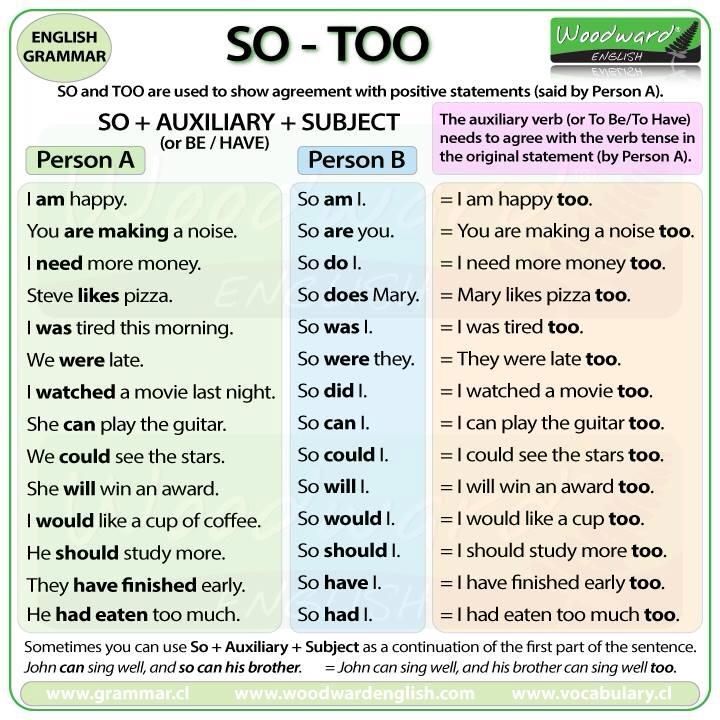 The baby is very free with his mother's breasts. Sometimes it happens that he comes up to suck just for pleasure. For example, like this: he comes up, climbs on his knees, looks into his mother’s face, smiles, starts to swarm in his shirt, gets breasts, smiles at his breasts, sucks for 30 seconds and leaves. nine0036
The baby is very free with his mother's breasts. Sometimes it happens that he comes up to suck just for pleasure. For example, like this: he comes up, climbs on his knees, looks into his mother’s face, smiles, starts to swarm in his shirt, gets breasts, smiles at his breasts, sucks for 30 seconds and leaves. nine0036
 I know my mother, a lover of embroidery, who used this time specifically for embroidery ...
I know my mother, a lover of embroidery, who used this time specifically for embroidery ... As for the number of feedings per day when feeding a child on demand, their number is almost never less than 12. A newborn has 12 or more attachments, mostly they are all associated with dreams. And a child, say 1.5-2 years old, can also have about 12 attachments, only 3-4 are associated with sleep, and the rest are short-term attachments for various reasons. I suggest to all mothers reading this text - do not count the application, do not notice their duration. Breastfeed your baby as often as he asks, when you feel the need to. nine0004
Moms who don't think about breastfeeding without looking at the clock may get the impression that when breastfeeding on demand, the mother can do nothing but feed the baby. This is not true. After the birth of a baby, a mother begins another life, she is called life with a baby. That's all. The child is with the mother, not the mother with the child! Feel the difference! You need to be able to organize your life in a different way, in the first months, of course, the help of loved ones is very necessary. In the tradition of many peoples, it was customary for the first 40 days after childbirth to remove a woman from any housework and household chores, she was engaged only in a child. In some nations, objects that the mother of a newborn touched were considered “unclean”, therefore, they preferred to protect the mother from the rest of the household, allocating her a separate “corner” of the house, where no one bothered her and she did not interfere with anyone. Among the Slavs, such a restrictive custom was called a six-week. By 1.5-2 months, the rhythm of daytime dreams begins to form, and the baby has a kind of “regime”, the mother becomes more free. nine0004
This is not true. After the birth of a baby, a mother begins another life, she is called life with a baby. That's all. The child is with the mother, not the mother with the child! Feel the difference! You need to be able to organize your life in a different way, in the first months, of course, the help of loved ones is very necessary. In the tradition of many peoples, it was customary for the first 40 days after childbirth to remove a woman from any housework and household chores, she was engaged only in a child. In some nations, objects that the mother of a newborn touched were considered “unclean”, therefore, they preferred to protect the mother from the rest of the household, allocating her a separate “corner” of the house, where no one bothered her and she did not interfere with anyone. Among the Slavs, such a restrictive custom was called a six-week. By 1.5-2 months, the rhythm of daytime dreams begins to form, and the baby has a kind of “regime”, the mother becomes more free. nine0004
For a mother who can't imagine breastfeeding without looking back at the clock, and who is sure that the “right” baby is the baby lying quietly in her crib all the time, feeding on demand will be a complete hassle. It will be much easier for such a mother if she stops looking at the clock and ties the baby to herself with a large scarf or uses a patchwork holder (sling). It will become easier for her if she stops running between the nursery and the kitchen, but takes the baby with her to the kitchen and carries him around the house with her, doing housework, in a box, a cradle, a special chair, if she tries not to put him off often, and pick up as soon as possible, postponing the baby only in case of emergency and not for long. nine0004
It will be much easier for such a mother if she stops looking at the clock and ties the baby to herself with a large scarf or uses a patchwork holder (sling). It will become easier for her if she stops running between the nursery and the kitchen, but takes the baby with her to the kitchen and carries him around the house with her, doing housework, in a box, a cradle, a special chair, if she tries not to put him off often, and pick up as soon as possible, postponing the baby only in case of emergency and not for long. nine0004
Breastfeeding is not the same as house arrest. In the conditions of modern society, it is possible to organize the exit of a nursing mother to work from about 6 months of age of the baby. If necessary, you can start working from the age of 4 months, but, of course, it is better not every day of the week and not full time. It is the responsibility of a breastfeeding consultant to help a mother organize her return to work.
Sometimes, when I advise mothers on breastfeeding, I suggest that they forget for a second that they are already living in the 21st century.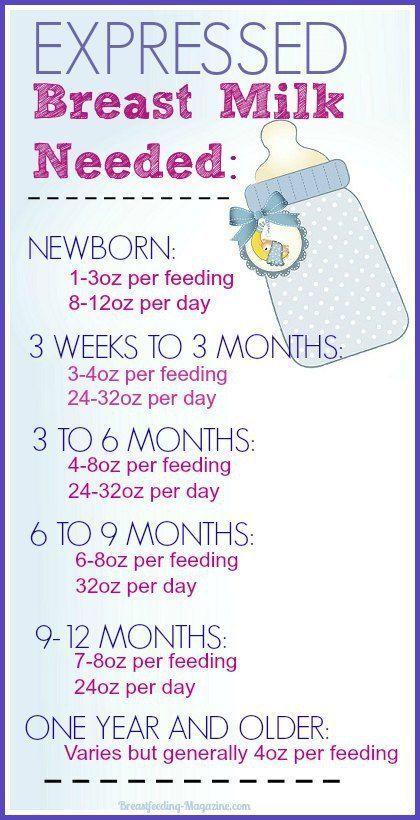 I propose to return, for example, to the cave and ask what they will do if the child woke up at night, how to calm him down? If you are walking through the forest and trying not to attract the attention of predators, how to make the baby silent? If the child is thirsty, what will you give him? What is the baby used to, for thousands of years of its existence? To the fact that he sleeps on his mother while she wanders through the forest with a digging stick in search of roots, and wakes up when mother stops. Since mom stopped, then there is time to wake up and suck. Therefore, even now the child sleeps well, tied to the mother with a patchwork holder, wakes up when the mother, having done a few household chores, sits in a chair to take care of the baby. nine0004
I propose to return, for example, to the cave and ask what they will do if the child woke up at night, how to calm him down? If you are walking through the forest and trying not to attract the attention of predators, how to make the baby silent? If the child is thirsty, what will you give him? What is the baby used to, for thousands of years of its existence? To the fact that he sleeps on his mother while she wanders through the forest with a digging stick in search of roots, and wakes up when mother stops. Since mom stopped, then there is time to wake up and suck. Therefore, even now the child sleeps well, tied to the mother with a patchwork holder, wakes up when the mother, having done a few household chores, sits in a chair to take care of the baby. nine0004
Some mother, reading about the cave, will be offended, saying that she is a civilized creature. But please think. Man, mother's breast and mother's milk have been created by evolution over millions of years. They are made for each other. Baby food has created progress and more recently. The skills of motherhood and breastfeeding have also been lost by our society quite recently. A person is not physiologically adapted to artificial feeding and a pacifier. The mother's breast will not produce enough milk at 6-7 feedings per day. Nature did not know, when creating man as a mammal, that the time would come when the need for breastfeeding would be satisfied by some kind of pacifiers and nipples. nine0004
Baby food has created progress and more recently. The skills of motherhood and breastfeeding have also been lost by our society quite recently. A person is not physiologically adapted to artificial feeding and a pacifier. The mother's breast will not produce enough milk at 6-7 feedings per day. Nature did not know, when creating man as a mammal, that the time would come when the need for breastfeeding would be satisfied by some kind of pacifiers and nipples. nine0004
Changes that occur during the formation of the personality of a child who did not have full contact with the mother during prolonged breastfeeding are noted by modern research by psychologists and sociologists. These are changes with a minus sign. It would be better if they were not, these changes.
Breastfeeding is not only important for the baby, it is also important for the mother. During on-demand feeding, the woman's feelings change, a stronger attachment to the baby is formed, the woman becomes more sensitive to the needs of the baby.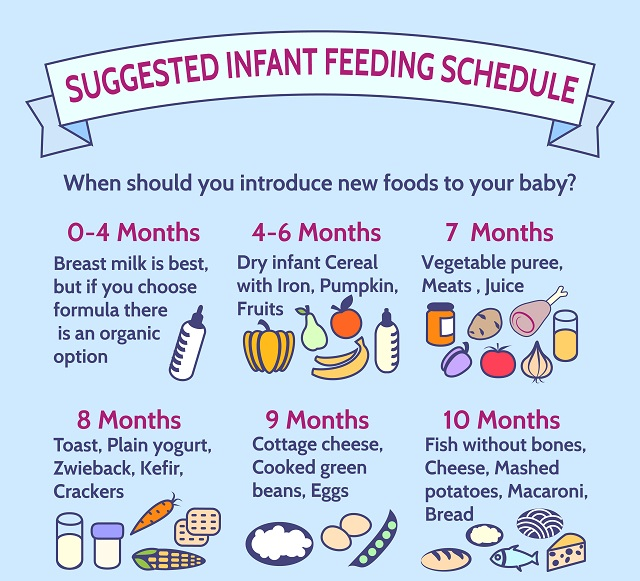 Deeper affection and understanding are not only preserved in infancy. They persist for life. For clarity, imagine what happens to a woman’s feelings if she tries to “withstand” a child, endures his crying, anxiety. What happens to a woman if she uses the recommendation from one very popular parenting book: "Go to the child if he cries for more than 15 minutes"? Speaking in abstract terms, humanity is interested in reviving the practice of breastfeeding. The revival of this practice is impossible without mothers realizing the true reasons for the child's need for attachment to the breast. nine0076
Deeper affection and understanding are not only preserved in infancy. They persist for life. For clarity, imagine what happens to a woman’s feelings if she tries to “withstand” a child, endures his crying, anxiety. What happens to a woman if she uses the recommendation from one very popular parenting book: "Go to the child if he cries for more than 15 minutes"? Speaking in abstract terms, humanity is interested in reviving the practice of breastfeeding. The revival of this practice is impossible without mothers realizing the true reasons for the child's need for attachment to the breast. nine0076
Lilia Kazakova, pediatrician,
head of breastfeeding and child care consultants
what is the diet at 5 months, complementary feeding menu for a five-month-old baby
Published: 10/07/2019
Reading time: 5 min.
Number of reads: 219762
By 5 months the infant reaches a certain maturity of the digestive and immune systems, allowing for non-dairy nutrition. Today, there are many points of view on the timing of the introduction of complementary foods, but there are criteria by which parents can absolutely understand whether their child is ready to change something in their own diet. nine0004
Today, there are many points of view on the timing of the introduction of complementary foods, but there are criteria by which parents can absolutely understand whether their child is ready to change something in their own diet. nine0004
Contents: Hide
- When should we start introducing complementary foods?
- What to prepare for a new stage in life?
- How to start complementary foods at 5 months?
- Which products are we introducing first?
- What not to give before 1 year
- Where to be vigilant?
- So all the same PORRIDGE or VEGETABLES?
Of course, the ideal period for the introduction of complementary foods at 6 months, but only on condition that the baby receives the optimal amount of nutrients from breast milk / mixture, has a good increase in height and weight, meets normal criteria for neuropsychic development. nine0004
But in real life, unfortunately, by the age of 5-6 months, children often begin to experience a deficiency in certain food components, which requires parents to correct the child's diet.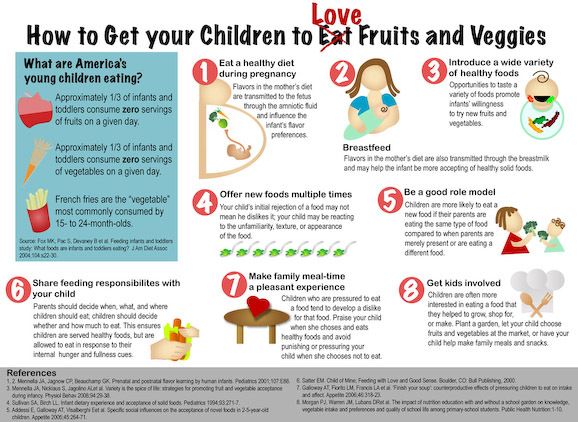 At the same time, allergists are unanimous in their opinion, who argue that the introduction of complementary foods in the interval of 4-6 months can reduce the risks of developing food allergies in the future, since it is in this age period that the immune system is most tolerant to new food agents.
At the same time, allergists are unanimous in their opinion, who argue that the introduction of complementary foods in the interval of 4-6 months can reduce the risks of developing food allergies in the future, since it is in this age period that the immune system is most tolerant to new food agents.
When to start introducing complementary foods?
There are several signs that a baby is ready to start weaning.
- One of the first is food interest. If the child is at the table with adults, he actively reaches for his mother's plate and is ready to try the food offered.
- And the next logical sign is coordination of movements: hand - spoon / food - mouth. The child may pick up pieces of food with his fingers and bring them to his mouth or try to put a spoon in his mouth. And do it consciously, not by accident! nine0036
- Child can sit. If he does not sit up on his own, but sits with support on an adult's lap, then this can also be considered a sign of maturity and readiness for complementary foods.

- Extinguishing reflex. The younger the child, the more actively he pushes any object, medicine, food out of his mouth. Gradually, the ejection reflex fades away and the little person is ready to accept other consistency than milk. But in the first days of acquaintance with complementary foods, some children have a gag reflex, which is very scary for parents. Thick porridge or pieces of fruit, when hit on the middle and back of the tongue, lead to a spasm of the larynx, and the person returns the food to the front of the tongue and / or spit out the product. This is also one of the stages of development, and the faster the gag reflex fades, the more often you feed the child with complementary foods and do not take breaks in the new diet. nine0036
What to prepare for a new stage in life?
- Your baby will definitely need a high chair and a colorful plate (with a rubber bottom or with a suction cup). Comfortable spoon, not too small and not too big, with a comfortable handle that the baby can hold in his hand.
 Bibs should be exactly at least two, waterproof and with a convenient lock. Lots of paper towels and a huge amount of patience.
Bibs should be exactly at least two, waterproof and with a convenient lock. Lots of paper towels and a huge amount of patience.
How to start complementary foods at 5 months? nine0011
At present, there is no strictness in the sequence of introduction of certain products. The only thing children's nutritionists, pediatricians and other specialists agree on is that the child should receive the foods that are traditionally eaten in his family. If the family lives in Siberia, then the baby should try the apple earlier than the mango or blackberry.
- The first complementary foods most often are cereals or vegetables. The baby gets acquainted with each product for 1-3 days, and after that, parents can continue to get acquainted with new types of complementary foods or expand the range within the same group. If we stretch the acquaintance with each new dish for 7-10 days, then by the age of 1 we will not have time to introduce into the diet all the food groups that the family eats every day.
 3 days is the optimal period for which any parent will understand the reaction to a particular product of their child. Therefore, we boldly begin complementary foods with the appearance of all signs of readiness and teach the little person adult nutrition. nine0036
3 days is the optimal period for which any parent will understand the reaction to a particular product of their child. Therefore, we boldly begin complementary foods with the appearance of all signs of readiness and teach the little person adult nutrition. nine0036 - Acquaintance with new products is better to start in the morning or in the afternoon. This rule is conditional, and it is necessary to observe it only so that in the event of a negative food reaction (rash, vomiting, diarrhea, etc.) in response to a new dish, parents can quickly contact a specialist and receive medical assistance if necessary, which is better. do during the day, not late in the evening or at night.
- Diet when transferring a child to an adult table must be observed. This is done so that the child is psychologically and physiologically ready for a certain interval between meals. Children do not perceive the variability of the environment well, and for harmonious development they need to follow the rituals and the usual sequence of actions of their parents: after sleep, breakfast always follows, and after a walk, lunch.
 Also, observing the intervals between meals allows the child to feel hunger and satiety, thereby correctly hearing the signals of his body and forming eating behavior. nine0036
Also, observing the intervals between meals allows the child to feel hunger and satiety, thereby correctly hearing the signals of his body and forming eating behavior. nine0036 - Snacking before 1 year of age is not necessary, most infants receive on-demand breast milk for a long time, and formula-fed infants have an optimal set of nutrients in formula, which eliminates additional meals outside the main ones.
- At the age of 5-6 months of life, the number of non-dairy meals should be at least 2 times a day, by 9 months the number increases to 3 times a day. Most likely it will be breakfast and lunch. Only a mother and her baby can choose the time for complementary foods, because even babies can be larks or owls. Look at the biological rhythm of your baby. If he is very sleepy by 8 in the morning and has no interest in food, then breakfast should be shifted by 9−10 in the morning, and if you have a lark, then it is likely that porridge at 7 in the morning will make it even more active and cheerful.

Which products are we introducing first?
Due to the fact that the need to introduce complementary foods is dictated by the physiological needs of the baby for additional nutrients that the baby can no longer get with breast milk / formula, then products with a high nutritional value should be chosen.
- One of the earliest deficiencies is iron deficiency in infancy. Based on this, pediatricians recommend the first to introduce cereals, meat, fish or eggs. Previously, meat and fish were offered in complementary feeding regimens after 6-7 months of age, but studies have confirmed the benefit of early introduction of meat into the diet of children under one year old to maintain normal blood hemoglobin levels. nine0036
- Importantly, for better absorption of iron from animal products, they should be combined with vegetables rich in vitamin C (broccoli, sweet peppers or pumpkin).
- But most parents, of course, are more accustomed to starting complementary foods with a cereal dish.
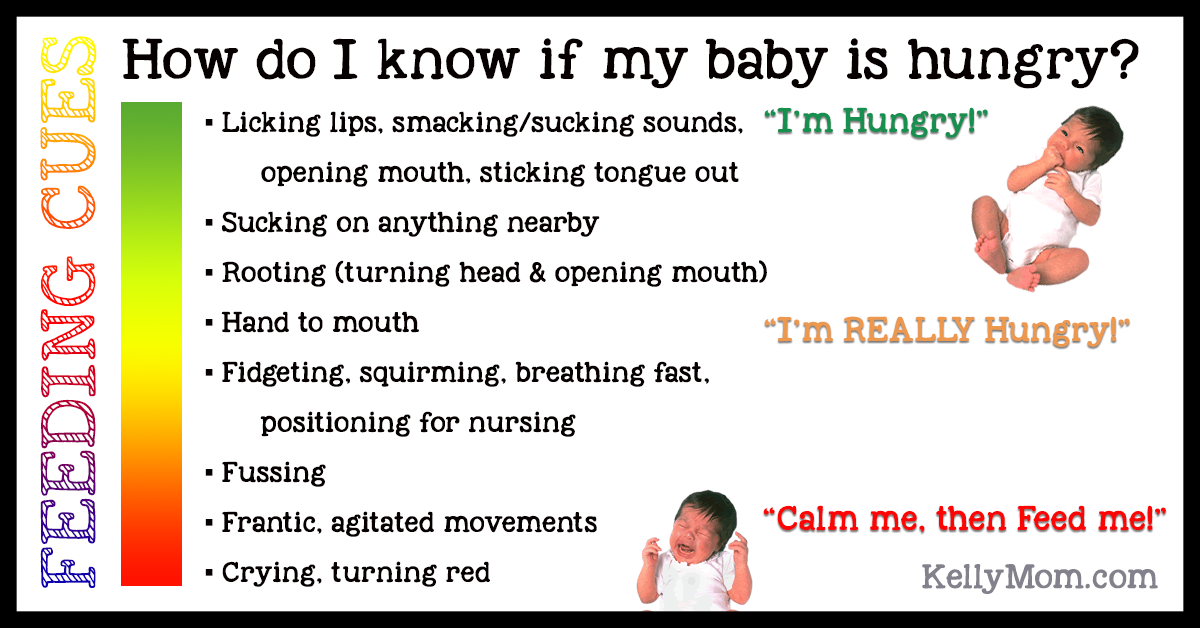 Therefore, of all cereals, we choose buckwheat, the richest in trace elements and iron (7 mg / 100 g of cereal). The first porridge for the baby should be dairy-free, without additional enrichment with sugar and salt, without gluten (the protein of some cereals). Therefore, buckwheat, as well as rice and corn, are ideal for a first acquaintance. nine0036
Therefore, of all cereals, we choose buckwheat, the richest in trace elements and iron (7 mg / 100 g of cereal). The first porridge for the baby should be dairy-free, without additional enrichment with sugar and salt, without gluten (the protein of some cereals). Therefore, buckwheat, as well as rice and corn, are ideal for a first acquaintance. nine0036 - Thus, porridge, vegetables and meat will be the first complementary foods on the baby's table. By 6-7 months, the child may well become familiar with all these food groups and absorb them well.
- The volume of the dish should not exceed the conventional norm (the size of the fist of a small person ≈ 80-100 g at the beginning of the journey) and then grow with the child.
Sample menu at 5 months. for artificial owl:
6:30 - mixture.
09:30 - dairy-free porridge 80 g + mixture. nine0004
13:00 onwards - mixture.
Sample menu for 6 months for an infant-lark:
5:00 - GV.
7:30 - dairy-free porridge + GW/mixture.
10:00 − GV.
13:00 - vegetables with meat + GW / mixture.
16:00 and beyond - GW / mixture.
What not to give before 1 year
ALL food groups must be included in the menu of young children so that it is varied and complete, but a number of adult dishes should not fall on the children's table. It is important for parents to know what should be EXCLUDED from children's diet:
- Added sugar and salt, which increases the load on the excretory system and increases the risk of developing cardiovascular disease in older age.
- Honey - due to the risk of botulism.
- Large varieties of fish (tuna, salmon) due to high mercury content.
- Seaweed due to its high iodine content, which can disrupt thyroid function.
- Spinach and beets, because they easily accumulate pesticides, the dose of which is toxic to children. nine0036
Where to be alert?
- There is a group of foods with a high allergenic potential: wheat, fish, eggs, nuts, seafood and cow's milk.
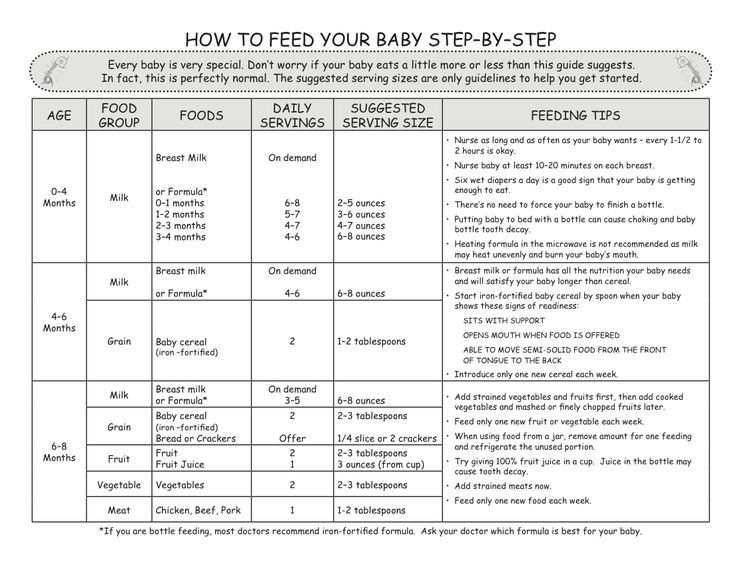 These foods are more likely than others to cause food allergies. But studies have shown that the introduction of food allergens in the first year of life reduces the risk of developing food allergies at an older age. Therefore, it is not necessary to sharply limit the introduction of these products, it is necessary to apply a more careful attitude to them. The introduction of any allergenic food should be against the background of the relative health of the baby, outside the day of vaccination and without the combination of other NEW foods. Within 3-5 days, mix small amounts of new into the main dish and observe the reaction. nine0036
These foods are more likely than others to cause food allergies. But studies have shown that the introduction of food allergens in the first year of life reduces the risk of developing food allergies at an older age. Therefore, it is not necessary to sharply limit the introduction of these products, it is necessary to apply a more careful attitude to them. The introduction of any allergenic food should be against the background of the relative health of the baby, outside the day of vaccination and without the combination of other NEW foods. Within 3-5 days, mix small amounts of new into the main dish and observe the reaction. nine0036 - But red fruits and vegetables are long gone from this list. The presence of moderate redness of the cheeks, chin after eating strawberries is not a cause for excessive concern. It is necessary to repeat the introduction of the berry in a couple of days and make sure that there is no reaction or that it is only a local short-term one.
So is PORRIDGE or VEGETABLES?
- In order to make a rational decision to start introducing complementary foods, parents need to contact their pediatrician.
 There are benefits to each type of food, and according to the child's health and maturity, the pediatrician will help the loving mother make the choice. nine0036
There are benefits to each type of food, and according to the child's health and maturity, the pediatrician will help the loving mother make the choice. nine0036 - Porridge is an ideal cereal product that is a rich source of energy, dietary fiber and trace elements. For the first feeding, both buckwheat and rice porridge are perfect. Specialized children's cereals are additionally enriched with a vitamin-mineral mixture, which helps to maintain a balance of nutrients in the child's diet and prevent the development of nutritional deficiencies. Baby Premium porridge for the first feeding is a lifesaver for mom, because it meets all the requirements for the transition of the child to adult nutrition, dissolves easily (without prolonged stirring and lumps) to the desired consistency and is represented by several cereals (rice, buckwheat , corn). nine0036
- Vegetables are an excellent source of vitamins, trace elements and fiber. Vegetable purees or light vegetable soups can also be introduced first due to their low allergenic potential, good digestibility and high nutritional value.
